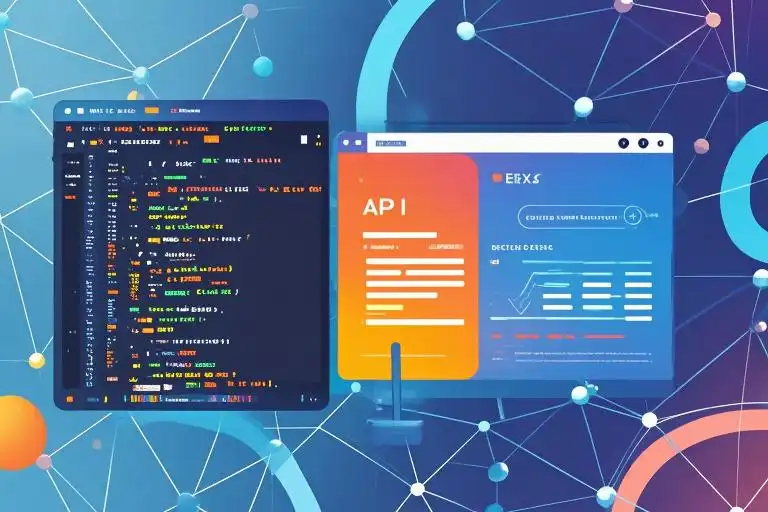You’re 3 hours into debugging yet another CORS error. The frontend team keeps asking why the login API returns 500 errors, while the backend swears their service works perfectly. Sound familiar? What if I told you there’s a way to eliminate these collaboration headaches and ship features faster? Enter Next.js API Routes – your secret weapon for full-stack harmony.
Why Your Coffee Cup Needs Next.js API Routes
Your React components chatting directly with backend logic in the same project. No more separate repositories, no complex deployment pipelines, just clean JavaScript files handling both UI and data magic. That’s not some futuristic fantasy – it’s exactly how API Routes work.
I once helped a startup cut their development time by 40% simply by switching to this pattern. Their CTO later confessed: “We didn’t realize how much time we wasted on API contract negotiations between teams until it disappeared.” Let me show you how to unlock this superpower.
Your Backend’s New Home: Understanding API Routes
Think of API Routes as friendly neighborhood mail carriers. When your React component says “Hey, I need user data!”, these routes grab the request from the browser, sprint to your database, and deliver the perfect JSON package – all without leaving your Next.js app.
Here’s why developers are obsessed:
- Zero Configuration – Built-in Node.js server ready out of the box
- TypeScript Love – End-to-end type safety from database to DOM
- Collision-Free – Routes live alongside components without conflicts
- Scale Ready – From MVP to enterprise-grade APIs seamlessly
Page Router: The Tried-and-True Classic
Let’s get our hands dirty. Create a pages/api/coffee.js file:
export default function handler(req, res) {
if (req.method === 'GET') {
res.status(200).json({ brew: 'Perfect espresso' });
} else {
res.setHeader('Allow', ['GET']);
res.status(405).end(`Method ${req.method} Not Allowed`);
}
}Boom! You’ve just created an API endpoint at /api/coffee. Test it with curl:
curl http://localhost:3000/api/coffeeReal-world pro tip: Add this middleware pattern for bulletproof routes:
// pages/api/_middleware.js
export { default } from "next-connect";
import { rateLimit } from "@/lib/security";
export default nextConnect()
.use(rateLimit())
.use(jsonBodyParser());App Router: The Future-Proof Powerhouse
Now let’s talk about the shiny new App Router. It’s like giving your API supercharged jet engines. Create app/api/coffee/route.ts:
import { NextResponse } from 'next/server';
export async function GET() {
return NextResponse.json({ brew: 'Cold brew revolution' });
}
export async function POST(request: Request) {
const data = await request.json();
// Add server-side validation here
return NextResponse.json({ ordered: data.drink });
}Notice the cleaner structure? Here’s why teams are migrating:
- Nested Layouts – Share auth logic across related endpoints
- React Server Components – Mix UI and API logic intelligently
- Streaming Ready – Handle large datasets effortlessly
- TypeScript First – End-to-end type inference
Security Blanket: Protecting Your Routes
Never make these mistakes I see in code reviews:
- Forgetting CORS configuration
- Skipping request validation
- Exposing sensitive errors
Implement this security triad:
- Validation – Zod schema parsing
const OrderSchema = z.object({
drink: z.string().min(2),
size: z.enum(['small', 'large'])
});- Authentication – JWT verification middleware
- Rate Limiting – Stop brute force attacks
When to Choose Which Router
Page Router vs App Router? Here’s my simple decision matrix:
| Scenario | Page Router | App Router |
|---|---|---|
| Legacy project | ✅ | ❌ |
| Complex nested routes | ❌ | ✅ |
| Immediate deployment | ✅ | ❌ |
| Streaming data | ❌ | ✅ |
| Gradual adoption | ✅ | ✅ |
From Concept to Production
Let’s build a real coffee ordering API together. We’ll:
- Create POST endpoint with validation
- Connect to PostgreSQL
- Add Stripe payment integration
- Implement email receipts
Watch how everything stays neatly organized:
/app
/api
/orders
route.ts # Main endpoint
schema.ts # Validation rules
db.ts # Database clientPro tip: Use Next.js server actions with API Routes for hybrid power:
// app/actions/order.ts
'use server';
export async function createOrder(orderData: FormData) {
// Server-side logic here
// Can call API Routes internally!
}Debugging Like a Pro
Found a mysterious 500 error? Try my 3-step survival kit:
- Console.log’s Evil Twin – Use
console.debugwith VSCode server output - Postman Collection – Save API test scenarios
- Error Boundary Wrapper – Graceful failure states
// app/api/orders/route.ts
import { captureException } from '@sentry/nextjs';
export async function GET() {
try {
// Risky operation
} catch (error) {
captureException(error);
return NextResponse.error();
}
}Future-Proofing Your API
Stay ahead with these emerging patterns:
- Edge Network Magic – Deploy routes globally with Vercel Edge
- GraphQL Hybrid – Add Apollo Server to existing routes
- Webhook Wizardry – Handle Stripe/Slack events seamlessly
- AI Integration – Add OpenAI endpoints with rate limiting
Your Full-Stack Journey Starts Now
Remember that frustrated developer debugging CORS issues? That could be your past self. With Next.js API Routes, you’re not just writing code – you’re crafting cohesive digital experiences. One codebase, endless possibilities.
Ready to transform how you build web apps? Your first API Route is just one pages/api folder away. What will you create tomorrow?

